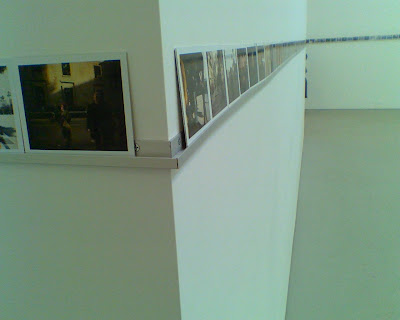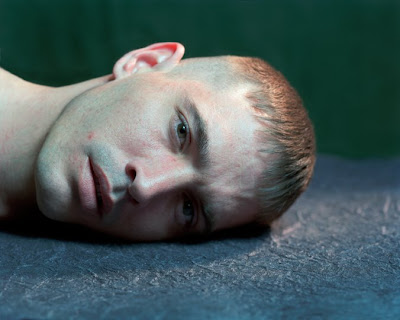 Wendel A.White, from the series "Small Towns, Black Lives"
Wendel A.White, from the series "Small Towns, Black Lives"
I'd been aware of Wendel A. White for several years before he sat down across the review table from me in New Orleans in December. Some time ago I followed a link to a 2002
New York Times review of his admirable, restrained, and moving web project (solidified into a book by Noyes Museum of Art in 2003),
Small Towns, Black Lives, which was the opening chapter in a series of projects investigating concepts of community in African America. Wendel has received a Guggenheim artist fellowship, among many other awards, and he's a professor of art at Richard Stockton College of New Jersey, so I was aware of him in the academic world through the Society for Photographic Education; another friend in that context, William E. Williams, had mentioned Wendel to me, and their works are complementary (Willie has done a lot with Civil War battlefields and locations along the Underground Railway). I like what Wendel has brought to a survey of historical and contemporary African American culture in New Jersey; his work has provided important insights for me.
The
Times writer described Wendel's images as "restrained rather than theatrical," and they do approach quietly, respectfully, as though aware of their cultural gravitas but relying on a viewer's extended attention and questions to fully animate them. During PhotoNOLA Wendel showed me work from "Schools for the Colored," the third and newest portfolio in the series. Here's an example:
 Wendel A. White, from the series "Schools for the Colored"
Wendel A. White, from the series "Schools for the Colored"
Sometimes, the buildings themselves are no longer standing:
 Wendel A. White, from the series "Schools for the Colored"
Wendel A. White, from the series "Schools for the Colored"Sometimes they've been swallowed up in larger structures:
 Wendel A. White, from the series "Schools for the Colored"
Wendel A. White, from the series "Schools for the Colored"The photographs employ a very simple device (masking, using lighter density for the surrounding environment) to memorialize structures that symbolized segregation but also provided shelter, education, and community for children in the "Up-South," the Northern "free" states along the Mason-Dixon line. Wendel ties the visual trope to a memory by W. E. B. DuBois, who wrote in
The Souls of Black Folk that when he was growing up he felt "different from the others; or like, mayhap, in heart and life and longing, but shut out from their world by a vast veil." In Wendel's photographs, the veil dims the world outside the buildings, which take on vividness such as they must have had to those who utilized them in the 19th and 20th centuries--they were oases, distinct from a world that was at best seeing African American lives through a veil, dimly.
Wendel A. White's
website













